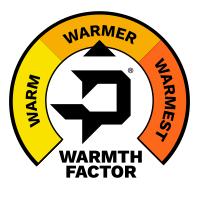
Packing Essentials When Traveling to High Altitude Places
Doctors consider any elevation over 4,900 feet as a high altitude, with extreme altitudes reaching 18,000 feet, about three miles. While that may not seem that high, a sudden change in altitude can seriously affect your body. Before you go on that trek, let’s review the most important packing essentials when traveling to high-altitude places.
Packing for Day Trips
If you don’t plan on trekking for more than a day, you can stick to carrying a light backpack that shouldn’t weigh over 2.5 lbs., and even that’s stretching it. Your first job is ensuring you have enough food and water to keep you fueled and hydrated throughout your adventure. At high altitudes, this is non-negotiable, so bring a water bladder and a snack packed with calories and protein. Your second job is to find your first aid kit, ensure everything is in it, and restock necessary items if needed.
Remember, the higher you go, the quicker weather can change, so bring a poncho and a small sweat towel. Hand sanitizer, walking sticks, wipes, and other equipment aren’t necessary, but if you have the strength and room in your bag, you can toss them in there, too.
The Basics
The rest of this article will focus on those planning a multi-day trip–the longer your expected stay, the more you need to bring, so pack your bag with caution and a scale nearby. Aside from what’s listed in the above section, you’ll also need multiple pairs of clothing designed to keep you safe and comfortable in the area’s climate. This list can include warm socks, weather-resistant pants, a jacket, thermals, waterproof hiking boots, and whatever else you need to stay warm, dry, or cool.
It's also wise to pack a power bank or extra batteries for any technology you might bring, such as phones, headlamps, GPS machines, flashlights, and more. Again, this isn’t an exact list detailing everything you can possibly need, as what you bring depends on potential weather, climate, the length of the trek, and your overall itinerary. These are mostly the essentials, but this should get you thinking about what else you might need specifically for your situation.
Health, Hygiene, and Safety Needs
Remember, traveling at high altitudes can affect your body, so be aware of the signs of altitude sickness. First and foremost, your first aid kit should include all your medications, anti-blister tape, vitamins C and E, and water purification tablets to prepare for the worst-case scenario. Vitamin C and E can help combat symptoms of altitude sickness, but you may also want to bring ibuprofen and anti-nausea pills.
Furthermore, consider bringing a few welfare items. While they may seem like unnecessary extra weight initially, being uncomfortable can make any trek miserable. Wet wipes, disinfecting wipes, deodorant, and dry shampoo can be a lifesaver, and if you’re prone to allergies, pack an antihistamine.
Don’t forget that one of the most crucial packing essentials when traveling to high-altitude places is what you wear, and Polarmax has you covered. Our lightweight thermal underwear is suitable for all seasons, so you can remain safe and comfortable wherever the next adventure takes you.

